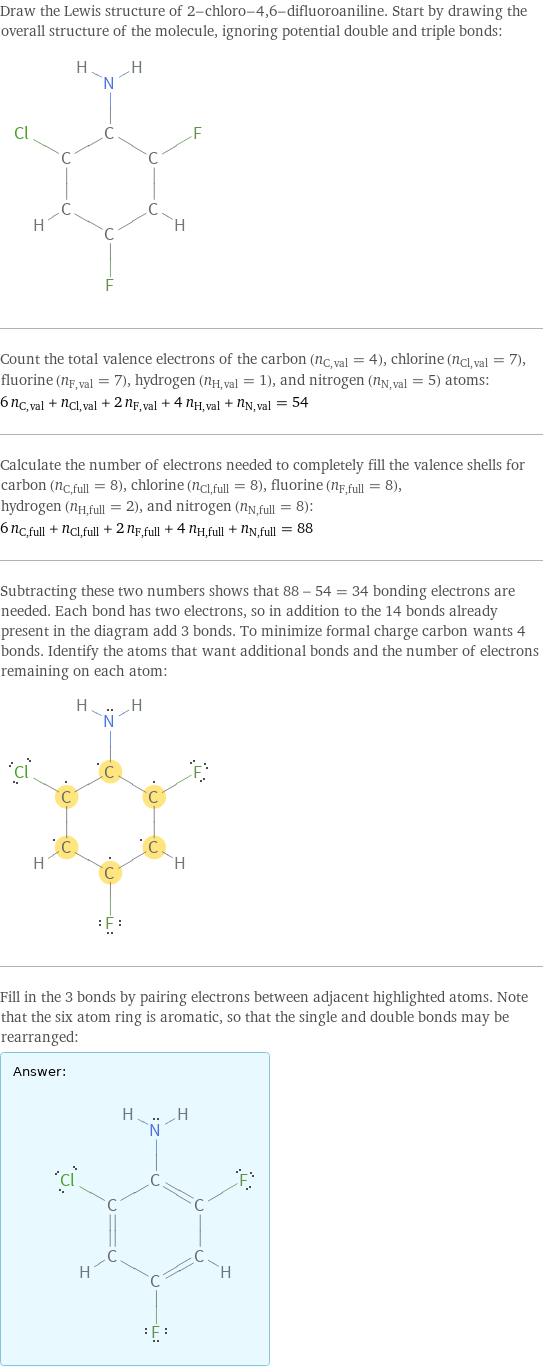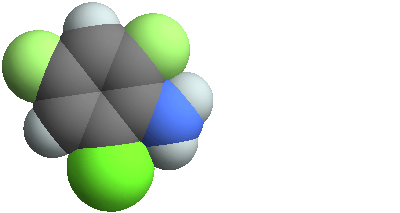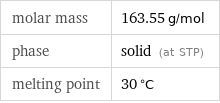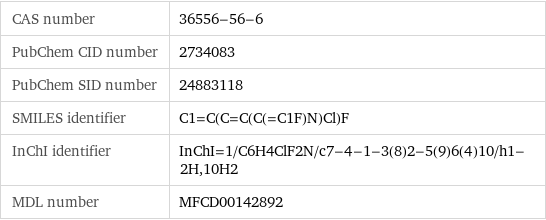Input interpretation

2-chloro-4, 6-difluoroaniline
Chemical names and formulas

formula | C_6H_4ClF_2N name | 2-chloro-4, 6-difluoroaniline alternate names | 2-chloro-4, 6-difluoro-aniline | (2-chloro-4, 6-difluoro-phenyl)amine mass fractions | C (carbon) 44.1% | Cl (chlorine) 21.7% | F (fluorine) 23.2% | H (hydrogen) 2.47% | N (nitrogen) 8.56%
Lewis structure

Draw the Lewis structure of 2-chloro-4, 6-difluoroaniline. Start by drawing the overall structure of the molecule, ignoring potential double and triple bonds: Count the total valence electrons of the carbon (n_C, val = 4), chlorine (n_Cl, val = 7), fluorine (n_F, val = 7), hydrogen (n_H, val = 1), and nitrogen (n_N, val = 5) atoms: 6 n_C, val + n_Cl, val + 2 n_F, val + 4 n_H, val + n_N, val = 54 Calculate the number of electrons needed to completely fill the valence shells for carbon (n_C, full = 8), chlorine (n_Cl, full = 8), fluorine (n_F, full = 8), hydrogen (n_H, full = 2), and nitrogen (n_N, full = 8): 6 n_C, full + n_Cl, full + 2 n_F, full + 4 n_H, full + n_N, full = 88 Subtracting these two numbers shows that 88 - 54 = 34 bonding electrons are needed. Each bond has two electrons, so in addition to the 14 bonds already present in the diagram add 3 bonds. To minimize formal charge carbon wants 4 bonds. Identify the atoms that want additional bonds and the number of electrons remaining on each atom: Fill in the 3 bonds by pairing electrons between adjacent highlighted atoms. Note that the six atom ring is aromatic, so that the single and double bonds may be rearranged: Answer: | |
3D structure

3D structure
Basic properties

molar mass | 163.55 g/mol phase | solid (at STP) melting point | 30 °C
Units

Chemical identifiers

CAS number | 36556-56-6 PubChem CID number | 2734083 PubChem SID number | 24883118 SMILES identifier | C1=C(C=C(C(=C1F)N)Cl)F InChI identifier | InChI=1/C6H4ClF2N/c7-4-1-3(8)2-5(9)6(4)10/h1-2H, 10H2 MDL number | MFCD00142892